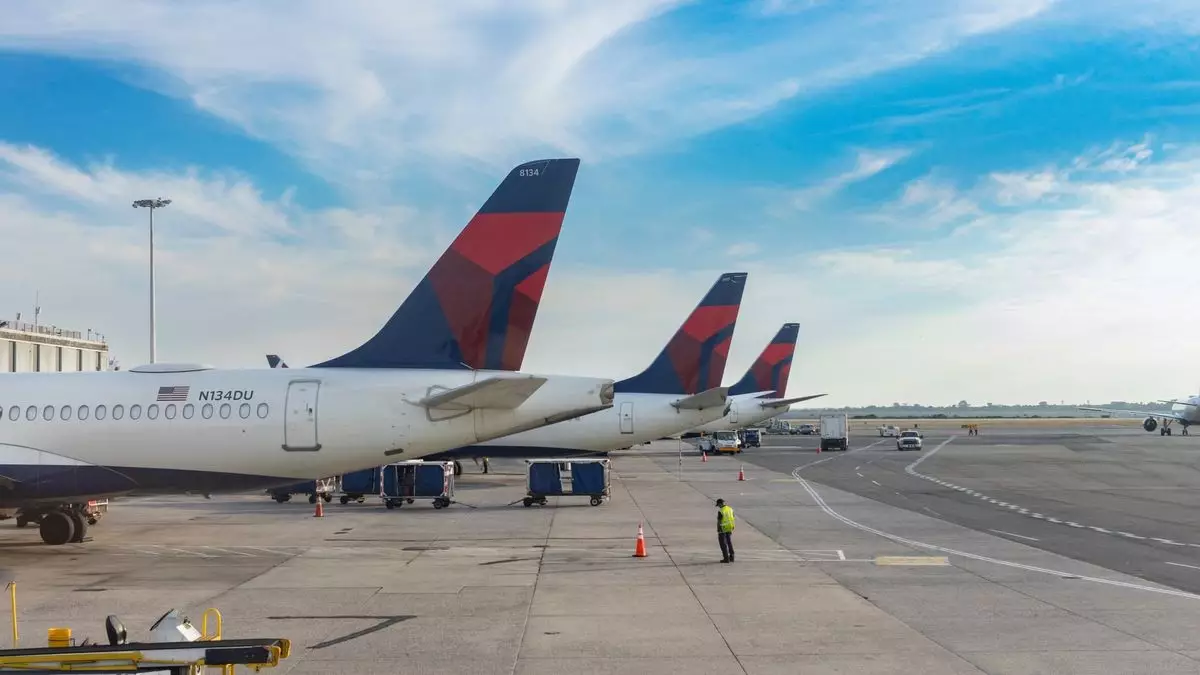Delta Air Lines has reported a sharp 30% decline in its operating income for the third quarter, underscoring the severe impact of overcapacity in the industry combined with internal operational failures. The airline’s inability to effectively manage flight schedules, exacerbated by an IT outage in July linked to CrowdStrike, has led to a staggering cancellation of approximately 7,000 flights. This operational meltdown has not only resulted in poor customer experience but has also severely dented Delta’s finances, costing an estimated $500 million in net operating income.
Operating income fell to $1.4 billion, a significant drop from the $1.98 billion recorded in the same quarter the previous year. Although operating revenue saw a slight increase of 1% to $15.7 billion, this positive trend was overshadowed by a 6% rise in expenses. Delta’s operating margin also suffered, plummeting to 8.9%, a notable decline from 12.8% a year prior. The pressures of excess capacity in the industry contributed to an average revenue per mile decline of 3%, reflecting broader market challenges that have put constraints on the airline’s revenue growth.
Despite the disheartening performance, Delta management remains optimistic about the future. Glen Hauenstein, the airline’s president, noted during the earnings call that the current capacity dynamics in the U.S. airline industry have begun to stabilize, creating a more favorable environment for Delta in the upcoming quarter. The airline is projecting an operational turnaround for Q4, with an expected operating margin of 11% to 13%, compared to last year’s fourth-quarter margin of 9.3%.
This optimism is grounded in a reduction of industry capacity, anticipated to lead to higher airfares, which would positively impact Delta’s bottom line. Recent data showed a 1.6% increase in ticket prices year-over-year as of September, indicating a potential rebound in the market. Delta’s proactive approach to managing its capacity, with an increase of 3% to 4% planned for the fourth quarter, aligns with the industry’s tentative shift towards matching capacity more closely with consumer demand.
The industry as a whole faced significant fluctuations in capacity throughout the summer. In July, airlines operated 5.8% more in seat miles than in the previous year, leading to higher competition and lower airfares. However, a sharp correction in September saw a mere 1.2% growth, especially as budget airlines moderated their schedules in response to dwindling ticket prices. Analysts expect a cautious approach in the upcoming months, with airlines planning a modest 1.8% capacity increase going into Q4.
Delta’s strategy appears to follow suit, as the airline seeks to navigate the complexities of a recovering travel market while aiming to capitalize on improved fare prices. However, it remains to be seen how effectively Delta can execute its plans against the backdrop of an industry still grappling with many uncertainties.
While Delta Air Lines has experienced a tumultuous quarter marked by declines in income and operational efficiency, there is a glimmer of hope as the airline looks towards a potentially fruitful fourth quarter, leveraging capacity adjustments to optimize performance.


Leave a Reply